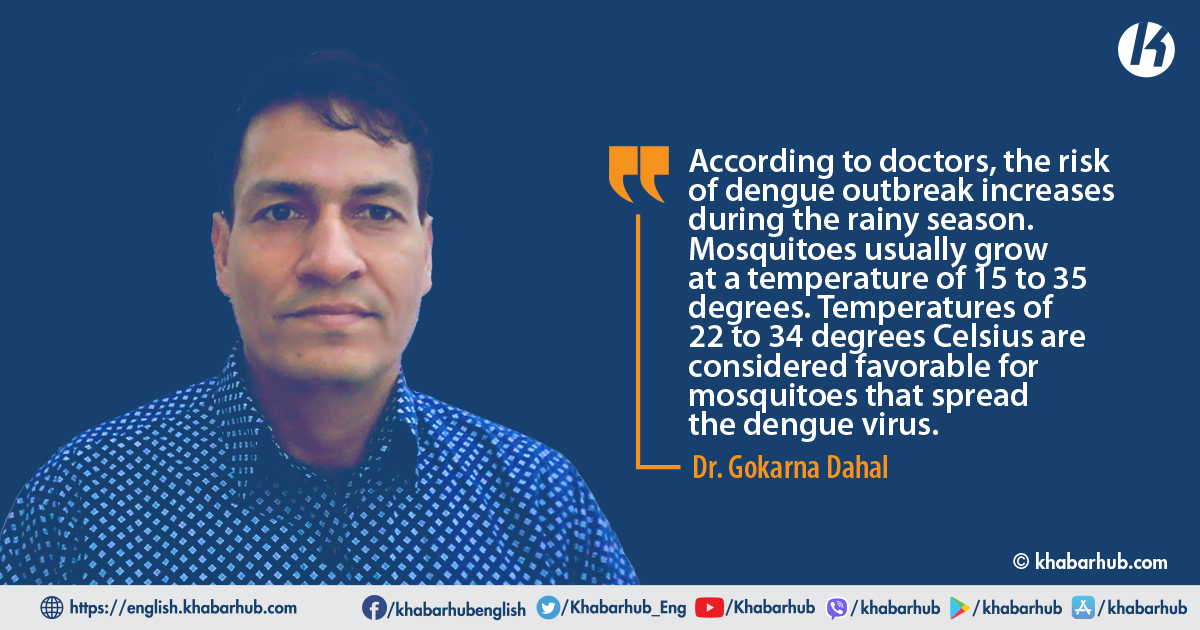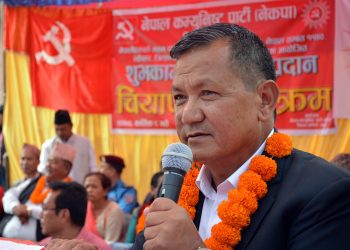KATHMANDU: Outbreak of dengue, which are mostly seen in the Terai, have recently started appearing in Kathmandu along with the hilly areas. Nepal has seen a dengue outbreak for the past few years. Since the beginning of 2022 alone, 83 dengue patients have been found in 31 districts.
Aedes aegypti and ae dengue, a virus transmitted by the bite of a female mosquito of the genus Albopictus, is now seen as an outbreak. The disease has been reported in 31 districts.
According to doctors, the disease appears more during the rainy season. Mosquitoes usually grow at a temperature of 15 to 35 degrees. Temperatures of 22 to 34 degrees Celsius are considered favorable for mosquitoes that spread the dengue virus.
This species of mosquito bites only in the afternoon. As soon as dengue is found in many people, it could turn into an epidemic, raising fears.
At present, people go to the hospital for dengue tests even for common headaches and fever. A large number of people visit Shukraraj Tropical and Infectious Disease Hospital in Teku, Kathmandu to get tested for dengue.
Dengue is a virus. There are four serotypes of dengue (including 1, 2, 3, and 4). When a serotype is infected, antibodies are made against the serotype in the infected person’s body. However, it does not protect against other serotypes.
A person can be infected up to four times. All four serotypes have been certified in Nepal.
How to take dengue fever?
Outbreaks appear to be exacerbated during the pre-monsoon and monsoon seasons. Diseases like dengue and scrub typhus have increased this year as compared to last year.
According to last year’s data, it was seen in about 58 districts. According to the current year’s data, it has been found in 31 districts. Dengue is not found in one place alone, it is only seen sporadically.
If more is seen in one place, we have asked the concerned directorate, concerned district, and municipality to monitor it. Dengue is a notifiable disease. Although the private sector has identified the case, it seems that the report has been delayed. After reporting, we have been giving the reflection to every state, district, and municipality.
How do you know if you have dengue fever?
Dengue is a control strategy in all hospitals and health institutions. We have also made scrub-typhus guidelines. That guideline has been circulated up to the health post level. Some have even been shown to cure dengue on their own.
If someone has a fever, there is a problem. We have informed all the health workers about the profile of the fever. They are testing. Usually, as in other infections, dengue causes fever, pain in the front of the eyes, body aches, and headaches. This problem goes away on its own.
If someone has a problem with the bleeding system, if the platelets are low, red rashes will appear, and blisters will appear. As soon as such symptoms appear, one should go to the hospital for examination. That can only ensure timely consultation with the doctors or health workers. And timely consultation helps in quick recovery.
Mosquitoes transmit dengue
Dengue is a disease caused by a virus. If a person with dengue is bitten by a mosquito and another healthy person is bitten, dengue is transmitted.
It is transmitted only by mosquitoes. There is no other way to spread dengue. In the context of our country, dengue has been transmitted by the bite of the aegypti species of mosquitoes.
What is the current situation?
The current situation has been reported in 31 districts. But, the number is not much so far. Last year, according to the Nepali fiscal year, about 487 dengue cases were found in 58 districts. However, only about 87 cases have been reported this year.
It is found not only in Terai districts but also in hilly and mountainous districts. It is remarkable that dengue is not only seen in one place but everywhere. Seven or eight cases were reported in Dhading. Our strategy is to find and destroy the larvae. If the strategy works, it will obviously generate awareness as well.
The season for dengue transmission is monsoon. It is raining a lot at this time and water can be frozen in the ditches. This problem may increase in urban areas. However, it will not be confined to one place.
What is the government doing to control it?
When the Epidemiology and Disease Control Division prepared the budget, we sent money to all the municipalities based on last year’s dengue patient statistics to work as a campaign to find and destroy dengue larvae.
Last year, we sent a small amount of resources to the municipalities based on the case. However, since this resource is not enough, the local government can mobilize the resource. If there are more cases, we are ready for technical support. We help as much as we can.
What can be done to prevent problems?
Outbreaks appear to be exacerbated during this time. The outbreak could last until December. That is why everyone needs to be aware. For that, you need to keep the environment around your home clean.
Public awareness programs should be run in schools and communities. Water should not be allowed to freeze around the house as it rains a lot this season. When wearing clothes, you should wear full-sleeved clothes. One should wear mosquito repellent or use caution.
Should you have any symptoms like dengue, you should go to the hospital immediately.









Comment